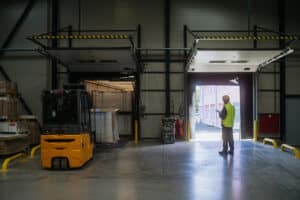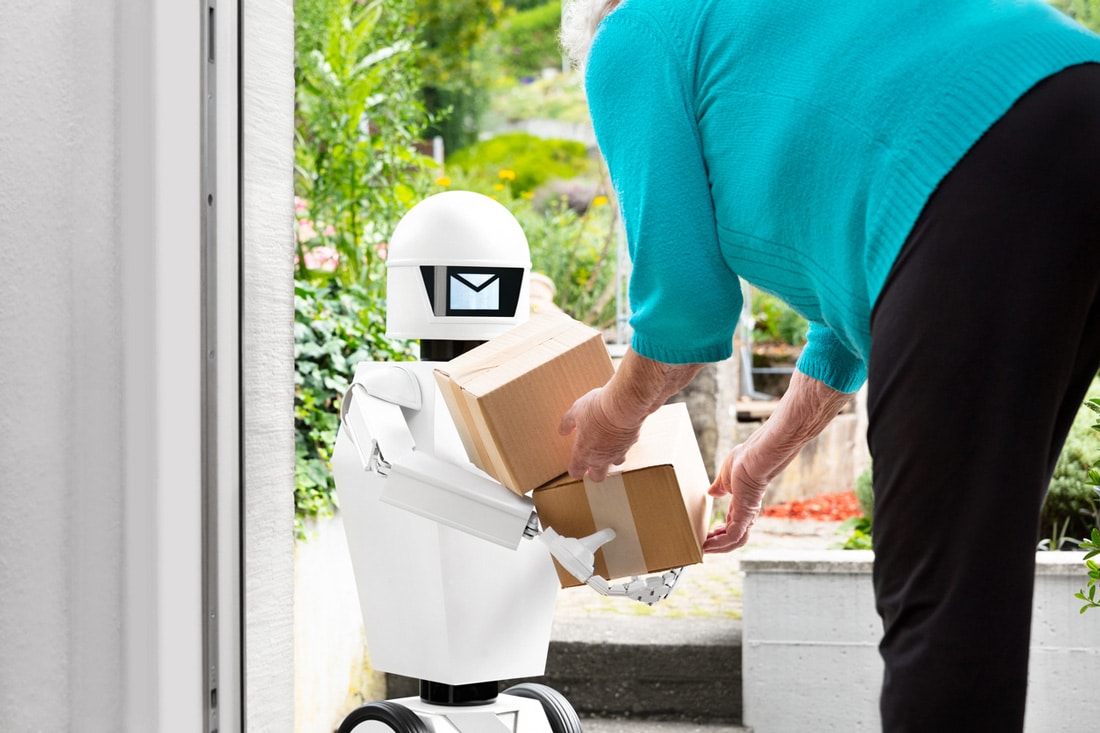The Future of Last-Mile Delivery: What to Expect in 2025
The last mile delivery market is undergoing a big shift, shaped by rising consumer expectations, automation, sustainability initiatives, and shifting real estate dynamics. As businesses look for ways to streamline operations, reduce costs, and enhance delivery speed, last-mile logistics providers are adopting new technologies and strategies to stay ahead.
This is the second installment in our 2025 Supply Chain Outlook series, where we break down the biggest trends shaping logistics in the year ahead. In our first post, we explored warehouse trends for 2025 highlighting automation, labor challenges, and the growing demand for flexible fulfillment solutions. Now, we’re diving into last-mile delivery—where speed, efficiency, and adaptability are more critical than ever.
Here’s what’s shaping the last-mile industry in 2025—and what companies need to do to keep up.
Technology is Shaping the Future of Final Mile Delivery
Autonomous Vehicles & Drones
Major shipping companies are already testing drone deliveries to reduce delivery times and costs. Autonomous ground vehicles, such as robotic couriers and self-driving vans, are also gaining traction, with some companies like deploying solutions in select cities.
While these innovations promise faster and more cost-effective deliveries, widespread adoption still faces regulatory, infrastructure, and cybersecurity hurdles. However, as these challenges are addressed, expect to see continued investment in automated last-mile solutions.
AI-Driven Logistics & Predictive Analytics
AI and machine learning are revolutionizing last-mile logistics by optimizing delivery routes, forecasting demand, and improving order accuracy. Businesses are using real-time tracking and predictive analytics to anticipate traffic patterns, reduce failed deliveries, and provide customers with more flexible options.
Enhanced Customer Experience
Customers now expect more than just fast shipping—they demand personalized, flexible delivery options and real-time visibility. Logistics providers are responding by offering:
- Dynamic routing & rescheduling — Customers can change delivery windows or locations on the fly
- Eco-friendly delivery choices — Options for electric vehicle (EV) delivery or consolidated shipments
- AI-powered customer service — Chatbots and proactive notifications to improve communication
The Shrinking Warehouse Footprint: Why Small Facilities Are Harder to Find
The demand for small warehouse space is skyrocketing, leaving many businesses struggling to find affordable, well-located facilities for last-mile fulfillment. Vacancy rates for small warehouses are at historic lows, particularly in urban areas where demand is highest.
This trend is driving more companies to outsource last-mile fulfillment to cross-dock facilities, which offer a cost-effective alternative to traditional warehouses. Cross-docking allows businesses to move goods quickly through a facility without long-term storage, reducing costs and improving efficiency.
Who’s using cross-dock services?
- E-commerce & retail brands — Speeding up last-mile delivery without needing dedicated storage
- Small businesses — Accessing scalable logistics solutions without high overhead costs
- Grocery & perishable goods — Minimizing dwell time to keep products fresh.
- Big-box retailers — Streamlining store replenishment while reducing inventory holding costs.
By leveraging cross-docking, companies can maintain fast, efficient delivery operations without investing in costly, hard-to-find warehouse space.
Sustainability & Cost Pressures: A New Era of Green Logistics
Eco-Friendly Delivery Solutions
With consumers and regulators, especially in urban areas, pushing for greener supply chains, logistics providers are ramping up their sustainability efforts and looking for cost savings at the same time by:
- Expanding electric delivery fleets (The nation’s largest shipping companies are all making major investments)
- Utilizing bicycle couriers and micro-mobility solutions in dense urban areas
- Reducing packaging waste with biodegradable and reusable materials
Managing Rising Costs
Despite advances in automation and efficiency, last-mile delivery remains one of the most expensive parts of the supply chain. Businesses are combating rising costs through:
- Micro-fulfillment centers — Reducing the distance between inventory and customers
- Data-driven optimization — AI-powered routing to lower fuel and labor expenses
- 3PL partnerships — Leveraging established networks to scale without increasing overhead
🚚 Looking Ahead: What’s Next for Last Mile?
As we move through 2025, last-mile logistics isn’t just evolving—it’s transforming. To stay ahead, businesses are focusing on:
✅ Proximity & Cost-Efficiency – Getting closer to customers without breaking the bank
🤖 Automation & AI – Accelerating deliveries with smart tech
🔄 Cross-Docking & Flexible Fulfillment – Tackling warehouse space shortages with agile solutions
🌱 Sustainability – Meeting regulations and consumer expectations
📦 Enhanced Customer Experience – Offering more flexible, tech-enabled delivery options
At Capstone Logistics, we turn these challenges into opportunities. Our scalable, tech-driven last-mile solutions—cross-docking, micro-fulfillment, and AI-powered route optimization—keep your supply chain moving seamlessly.
Want to improve your last mile delivery strategy in 2025? Let’s connect here.

